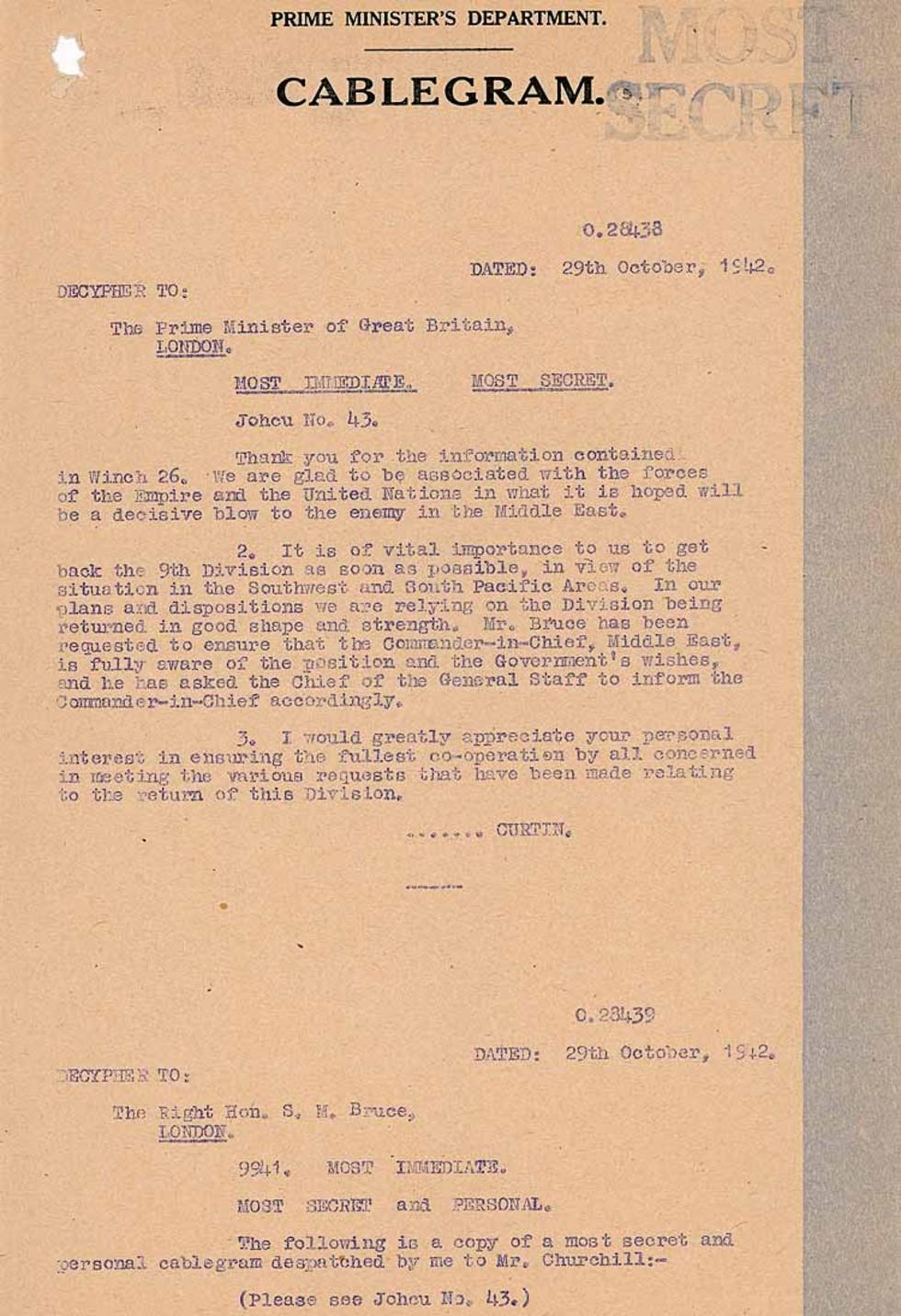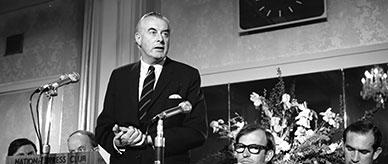


About this record
This is a cablegram from Australian Prime Minister John Curtin to his British counterpart, Winston Churchill, on 29 October 1942. Marking his message 'MOST IMMEDIATE' and 'MOST SECRET', Curtin tells Churchill it is of 'vital importance' that the 9th Division of the Australian Imperial Force (AIF), which has been fighting in North Africa, be returned to Australia as soon as possible. He states that Australia is relying on the division being returned 'in good shape and strength' to help fight Japanese forces, and he requests Churchill's help in ensuring this occurs.
Educational value
- This cabled request from John Curtin (1885–1945) for the return of the last Australian infantry division still in North Africa was made amid fears that it was still possible for the Japanese to invade Australia. Parts of northern Australia had been under intermittent Japanese air attack since February 1942, and in early August Australia's heavy cruiser HMAS Canberra had been sunk in the Battle of Savo Island, a disastrous battle for both Australia and the United States.
- This cablegram was not the first indication that Australia wanted the 9th Division home. Curtin had already given notice that Australia would not agree to it being broken up because of casualties, nor would Australia send reinforcements. Six days before this cable was sent, the British Commander-in-Chief in the Middle East, Harold Alexander, had been informed that Australia wanted its men back. The 9th Division finally left for home on 23 January 1943.
- In his reply to this message, Churchill gave Curtin a rather disingenuous assurance that he would take a personal interest in the question of the return of the 9th Division, but Curtin already had good reason to doubt Churchill's sincerity. In February 1942, he had requested that the 7th Division of the AIF be sent from North Africa to Java. Instead, Churchill had ordered the troops be diverted to Burma and had tried, unsuccessfully, to bluff Curtin into acquiescence.
- Relations between the two leaders were not good and their cablegrams were often acrimonious, but this one must have particularly infuriated Churchill as the decisive second Battle of El Alamein against Rommel had just been launched, and the 9th Division was seen as the main pivot of operations. The offensive lasted from 23 October to 4 November 1942, during which time 2694 Australians from the 9th Division were killed, wounded or lost in action.
- Curtin was fully briefed on the El Alamein offensive and in this message he states his hope that it will be 'a decisive blow to the enemy in the Middle East'. The offensive ended up being one of the turning points in World War II (1939–45) and a major victory for the Allies, who broke through the German and Italian line, forcing a withdrawal. At stake was control of the Suez Canal linking the Mediterranean Sea with the Indian Ocean.
- Tensions between Curtin and Churchill related to their different strategic interests. Churchill had a secret agreement with the US President to defeat Germany first before focusing on defeating Japan. Curtin wanted all available Australian troops as close to home as soon as possible. While Churchill believed the naval victories at the battles of the Coral Sea and Midway had removed any threat of Japanese invasion, in late 1942 Curtin was still far from convinced.
Acknowledgments
Learning resource text © Education Services Australia Limited and the National Archives of Australia 2010.
Related themes
Need help with your research?
Learn how to interpret primary sources, use our collection and more.


